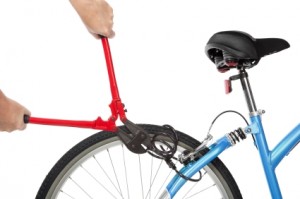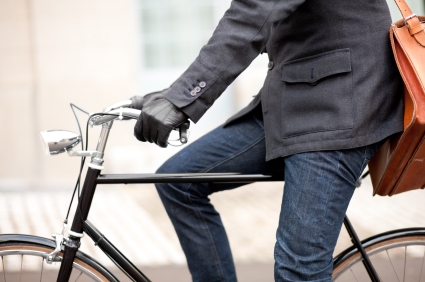 As the summer cycling season gets into gear, the Insurance Information Institute reminds people that bicycles can cost anywhere from several hundred dollars for a basic bike to thousands of dollars for specialized racing bikes. Whether a bicycle is used as part of a commute to work or just ride around the block with the kids, it is important to understand the rules of the road and protect this financial investment with the proper insurance.
As the summer cycling season gets into gear, the Insurance Information Institute reminds people that bicycles can cost anywhere from several hundred dollars for a basic bike to thousands of dollars for specialized racing bikes. Whether a bicycle is used as part of a commute to work or just ride around the block with the kids, it is important to understand the rules of the road and protect this financial investment with the proper insurance.
Bicycles are covered under the personal property section of standard homeowners and renters insurance policies. This coverage will reimburse an insured, minus the deductible, if a bike is stolen or damaged in a fire, hurricane or other disaster listed in a policy.
Anyone purchasing a new bike should keep the receipt and call their insurance agent or company representative immediately. Those with a particularly expensive bicycle may want to consider getting an endorsement that will provide additional coverage. The insurance agent or company representative can review coverage options with their client.
There are two types of coverage for personal property:
- Actual Cash Value – reimburses for what the bicycle is actually worth given its age. A 10-year-old bicycle, for example, would be valued at the cost of a comparable bicycle minus 10 years depreciation.
- Replacement Cost Coverage – reimburses for what it would cost to replace that 10-year-old bicycle with one of like kind and quality at current cost. Replacement cost coverage costs about 10 percent more than actual cash value, but it is a good investment.
Homeowners and renters insurance policies also provide liability protection for harm an insured may cause to someone else or their property. If an insured cyclist injures someone in an accident and they decide to sue, the cyclist will be covered up to the limits of their policy. Homeowners or renters insurance also includes no-fault medical coverage in the event that someone else is injured. This coverage usually ranges from $1,000 to $5,000.
To make filing a claim easier, the I.I.I. suggests the following:
- Save receipts
Anyone buying a new bicycle might also purchase expensive equipment to go with it, so it’s important to save receipts for everything. The cost of a helmet, patch kits, pumps, extra inner tubes and other essentials, not to mention that fancy new bike jersey, can add up quickly. If a bike and related items are stolen or destroyed, having receipts can help speed the claims process. - Add your bicycle and related items to your home inventory
Everyone should have an up-to-date home inventory of all their personal possessions. An inventory can help in buying the right amount of insurance and make the claims filing process easier if there is a loss. To help create an inventory, the I.I.I. provides free, online software at KnowYourStuff.org.
Of course the best protection of all is to keep a bike safe; to help avoid theft, follow these simple rules:
- Always lock up a bike, even if it is in a garage, an apartment stairwell, or a college dormitory.
- Lock the bicycle to a fixed, immovable object like a parking meter or permanent bike rack. Be careful not to lock it to items that can be easily cut, broken or removed, and that the bike cannot be lifted over the top of the object to which it is locked.
- Lock up a bicycle in a visible, well-lit area.
- Consider using a U-lock and position the bike frame and wheels so that they take up as much of the open space within the U-portion of the lock as possible. The tighter the lock-up, the harder it is for a thief to use tools to attack the lock. Always position a U-lock so that the keyway is facing down towards the ground. Do not position the lock close to the ground as this makes it easier for a thief to break it.
- Do not lock up a bicycle in the same location all the time. A thief may notice the pattern and target the bike.
- Consider registering a bike with the National Bike Registry.
It is even more important to stay safe while riding. The National Highway Traffic Safety Administration suggests that cyclists follow these seven rules:
- Protect Your Head
Never ride a bike without a properly fitted helmet. - Assure Bicycle Readiness
Ride a bike that fits well and check all parts of the bicycle to make sure they are secure and working well. - Learn and Follow the Rules of the Road
Bicycles are considered vehicles on the road; therefore riders must follow the same traffic laws as drivers of motor vehicles. - Act Like a Driver of a Motor Vehicle
Always ride with the flow of traffic, on the right side of the road, and as far to the right of the road as is practicable and safe. - Be Visible
Always assume you are not seen by others and take responsibility for making yourself visible to motorists, pedestrians and other cyclists. - “Drive with Care”
When riding, act like the driver of a vehicle and always keep safety in mind. Ride in the bike lane, if available. Take extra care when riding on a roadway. Courtesy and predictability are key to safe cycling. - Stay Focused. Stay Alert
Never wear headphones as they hinder the ability to hear traffic. Be aware of surroundings and ride defensively.












